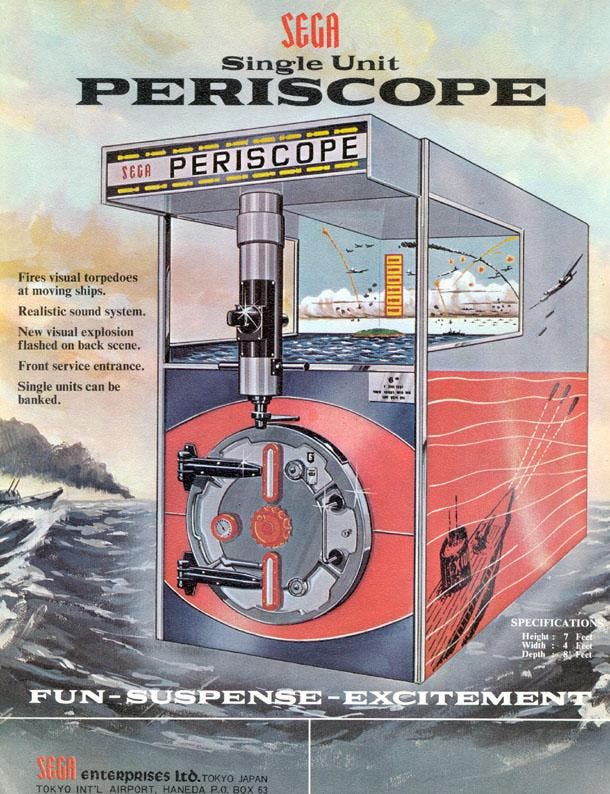Saturday Soapbox: The story of the microtransaction
The penny drops.
If gamers weren't defined by games, they would be defined by moaning. And the biggest moan of the last few years has been about microtransactions. I've heard people say that they're an innovation too far; that they're undermining AAA games; that they're destroying creativity; that they encourage addictive design; that the companies using them are greedy; worst of all, that they're allowing me to indulge in egregious semi-colon usage.
These are all wrong. Well, the semi-colon thing aside. Our goldfish memories are making the $50-70 outlay for an AAA game seem the norm - but it isn't. Microtransactions are how we've traditionally paid for certain games. And there's nothing inherently wrong with them. Look.

These are arcade machines. You might remember them. They're individually expensive but they make their money back just from microtransactions... otherwise known as quarters or ten pence pieces.
Arcade cabinets follow the whole model the microtransaction businessmen tell us that they've just invented - big upfront investment by the company, paid back by micropayments driven by compulsion loops. You just had to put that extra 50p in to make sure Ripley beat that Alien Mother to death with the big yellow Tonka suit. You had to pump those extra coins in to get that frog across the road. You'd never have beaten the presenter on Smash TV without a pocket full of change. You couldn't help yourself.
Arcade machines even allow for price differentiation; the owners can play around inside to alter the cost of each game, the difficulty, and so on. This is what games companies are heading back towards; DLC or Collector's Edition packages can reduce the difficulty for that customer, at a greater cost. And amusement arcade machines don't just take money - they pay out too. The past is, y'know, showing us the future dudes. This is some Nostradamus s**t, right here.
To show how ancient an innovation microtransactions are, look at the 1966 game Periscope.

Periscope was the first game that charged a quarter a go, and was hugely successful around the world. This was an arcade game but not a video game - it was, like all the games prior to 1966, an electromechanical game, like pinball. These clockwork games bespeak a whole lost history of gaming, which was all microtransaction-based.
Ignoring the hoax of the Mechanical Turk (a 17th century chess-playing machine that professed to be the IBM Watson of its day but actually had a human chess master hidden behind some uselessly whirring cogs), the predecessors of modern gaming machines appeared in the old penny arcades in the mid 19th century.
The simplest British coin slot mechanical machines, of which Pachinko and Penny Cascades are living fossils, go back as far as 1870. Before that people went to the fair and paid tiny amounts for a small chance to win a big prize - “throw these (lightweight, hollow) balls to knock all the (glued-down, heavy) coconuts over in the shy and win a giant (cheap, filled with newspaper) teddy bear!” Microtransactions have always been a part of games.
So, let's be honest, it's not microtransactions themselves that are the innovation - it's their linking to other concepts. We don't mind paying 69 pence to unlock a bunch of new levels in an iOS game that was free to download, for example - because if we want to unlock the levels, then 69p is nothing to pay for a game we're already enjoying. Nor do we mind paying a few quid for a new skin or announcer for DOTA 2 when we've been playing for a few hundred hours. In both cases, we're paying the developer for the fun we've had, either in advance or afterwards. However, if the game is using all the tricks of experimental psychology, the Skinner Box compulsion loop, to make us buy things without enjoyment - then we feel manipulated.
New Star Soccer on iOS has been widely praised for its original, complex gameplay - but not criticised for its tight compulsion loop and the necessity of paying to progress at what the game makes seem a normal level. I loved it. I was happy to pay some money to keep playing (and then more, to buy some outrageously posh, magic boots) but when I craved another microtransaction, I didn't just not buy more in-game money but immediately deleted the game. What I hated wasn't the microtransaction itself but the necessity of it to keep playing the game - and the associated compulsion loop that made it difficult to stop playing.
If microtransactions are linked to AAA games that already cost cash up front, that's objectionable too. Games like Assassin's Creed 3 or Mass Effect 3 use in-game currency to let you access tertiary game elements, such as skipping the time sink of the PvE multiplayer levelling system. By producing an easy route for the wealthy, the multiplayer provides an alternative to the skill-based combat supposedly at the game's heart and hence undermines it.
Sega's Missile, another electro-mechanical treat from the '60s.
Ian Bogost's forthcoming game/museum exhibition 'Simony' (a word meaning 'the act of buying advancement', originally from the Catholic Church) appears to be a satire on this. Players must remember a sequence to keep getting a high score, displayed on a high score table. However, they can also pay real money to skip a round, and do this to an extreme degree. Looking at the high score table, players can't tell who genuinely worked to get to the top - and who paid their way. Given that the top ten players at the end of the exhibition get to decide where the App money goes, there are real world consequences - and perhaps benefits - to cheating.
As for the link between microtransactions and a reduction in creativity; I'm a judge on this year's IGF and the quality of the iOS submissions gets better year on year. By enabling these developers to make a little bit of money out of something that wouldn't have got played except for the freemium model, microtransactions are making all sorts of games more viable - especially compared to the majoritarian Kickstarter. There are games that are about monetization and not creativity - but they're easy to spot and easy to avoid, and the companies that stick to them are only going to be in games for the short term (look at Zynga's current cashflow problems).
It's becoming increasingly obvious that the dominance of the cash-up-front model for AAA games was the aberration, created by the inability to sell digital code safely and directly to consumers without several layers of middlemen. Publishers, disc replicators, distributors, PRs, marketing... Selective pressures in niche environments produce bizarre outcomes and the whole game publishing structure was a hugely weird selective niche.
The norm of gaming is free or very cheap - the microtransaction has probably been around since 2000BC, when the Akkadians paid for everything in barley grains - but it's only now we're experimenting with its associations. So don't blame the penny or the nickel for simony, exploitation, or copycatting; that's the choice of the vendor. And it's your choice whether to buy them or not.

